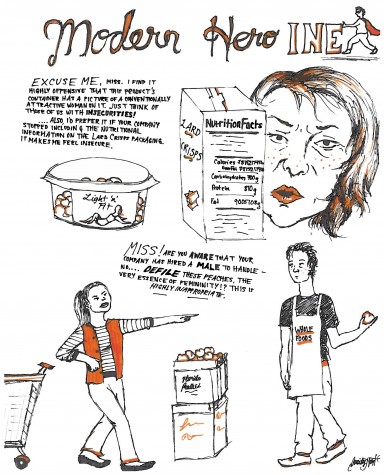Support for Animal Testing: The Harsh Reality
I would like to start off this editorial by clarifying that I am an animal lover. I have a couple of cats, a turtle, and I consider myself a die-hard defender of the small, furry and defenseless, which is why my positive stance toward animal testing may come as a bit of a shock.
At first it may seem a little hypocritical, endorsing the sometimes painful utilization of animals as test subjects, but after giving it some thought, I came to realize that the real hypocrite was me. After all, how different is animal testing than eating a hamburger or indulging in an Oreo or two? From wearing Uggs or wearing make up? After doing a bit of research, I actually came to find that animal testing is as a whole, extremely humane.
Animal testing is not fruitless; it is a last resort, used by scientists only when there is no other alternative method of research, such as in biomedical research, when animals are used as a sort of “model” while learning about certain diseases like cancer and HIV/AIDS. It is because of the participation of animals in research that treatments, such as new medications, have been designed to treat and improve the value of life in suffering human patients. Animal testing is also put to use in many other areas of research, including behavioral (psychology and addiction) research, military, space and agriculture research, as well as product development and drug testing. Without the help of animal testing, there would be no polio and hepatitis B vaccines, many medical procedures from testing blood pressure to perfecting heart and lung machines, and multiple surgery techniques as to correct and prevent bone disease would not exist.
Some may argue that animals are not willing participants like humans, and that there is no protection for them, but in fact that is wrong. No animal is put under testing without just cause, which before any experiment must be submitted and approved to ensure the need for the research. Animals do have rights, and scientists do care! This is why in 1966 an act known as the Animal Welfare Act (AWA) was passed, regulating the care and use of animals in research, testing, teaching, exhibition, transport and by dealers. Enforced by the U.S. Department of Agriculture (USDA), the AWA requires all research institutions “to establish an Institutional Animal Care and Use Committee (IACUC) ‘to oversee and evaluate all aspects of the institution’s animal care and use program,’” (neavs.org) meaning biannual lab inspections, reviewing and necessary revision of research protocols, submitting of evaluations reporting any deficiencies in animal care and use, and necessary investigation into misconduct and abuse.
Not only is animal testing beneficial to humans, but to other animals as well. Apart from assisting many animal professionals and veterinarians with the basic structure and understanding of animal anatomy and physiology, animal testing has previously helped to develop a vaccine for rabies, as well as aid in the development of heartworm medications, both of which have over the years helped countless numbers of dogs. Cat nutrition has also been better understood through research, which has lead to longer and healthier lives in many felines (ASPCA). Cats, dogs, mammals, amphibians, reptiles you name it have all reaped the benefits of research and testing and, like humans, will continue to.
Some may argue that animal testing is totally different than eating certain foods, wearing certain clothes or purchasing certain make ups…but is it? Have you ever heard of “factory farming”? Factory farming “regards all animals and the natural world merely as commodities to be exploited for profit (farmsanctuary.org),” an attitude which has led to the institutionalizing of animal cruelty, and animal and human health risks. For example, egg production. “From hatching to slaughter, egg-laying hens are subjected to mutilation, confinement, and deprivation of the ability too live their lives as the active, social beings they are” (farmsanctuary.org). Female chicks are de-beaked as chicks, usually involving a hot blade, to prevent abnormal feather pecking cause by the stress of confinement. This form of abuse causes “severe and possibly chronic pain.” As for male chicks, 260 million are killed on average each year upon hatching through torturous methods including electrification, gassed, or being consciously ground up in a “macerator.”
Uggs are made from sheepskin, which means the slaughter of sheep to warm your feet. Fish scales are that glow and shimmer in your lipstick, nail polish and lotion. Dyes and coloring are pigments from animals. Chicken bone marrow arises in face creams. Plastic shopping bags, car and bike tires, glue, fabric softener, toothpaste, shampoo and conditioner, all of these things include animal by products!
I believe in animal testing because I believe it is actually far more humane and lucrative purpose, and in the long run is beneficial to both animals and humans alike. Though an animal may suffer for a small period, it has a purpose; to ensure less suffering in the future for everyone.
Your donation will support the student journalists of Watertown High School. Your contribution will allow us to purchase equipment and cover our annual website hosting costs.

